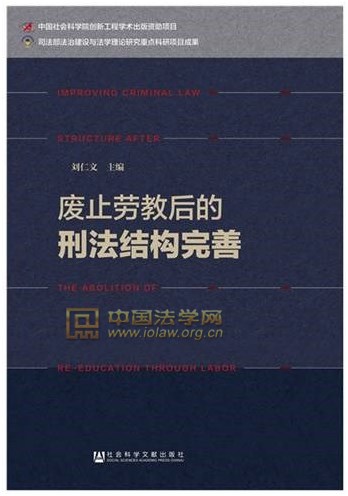
Liu Renwen (ed.), Improving Criminal Law Structure after the Abolition of Re-education through Labor, Beijing: Social Sciences Academic Press, 2015
In the end of 2013, the Standing Committee of the National People’s Congress announced the abolition of the system of re-education through labor, which had been implemented in China for near 60 years and had been the focus of attention and debate for many years. The abolition is of epoch significance. After the abolition, the mode of control of violations of law in China had changed from that of “troika” (public security punishment, re-education through labor, and criminal punishment) to that of “two-horse carriage” (public security punishment and criminal punishment). Actually only the system of “re-education through labor” in the narrow sense has been abolished and numerous systems of “re-education through labor” in the broad sense, namely systems of administrative detention, remain to be reformed. This book, taking the abolition of the “re-education through labor” system as the entry point, discusses the linkages between various punishment systems in the post-“re-education through labor” era, with special focus on the establishment of the criminal law structure of misdemeanor and felony and the dual public security punishment system, and points out that systems of “re-education through labor” in the broad sense, like the system of “re-education through labor” in the narrow sense, needs to be reformed and judicilized.


